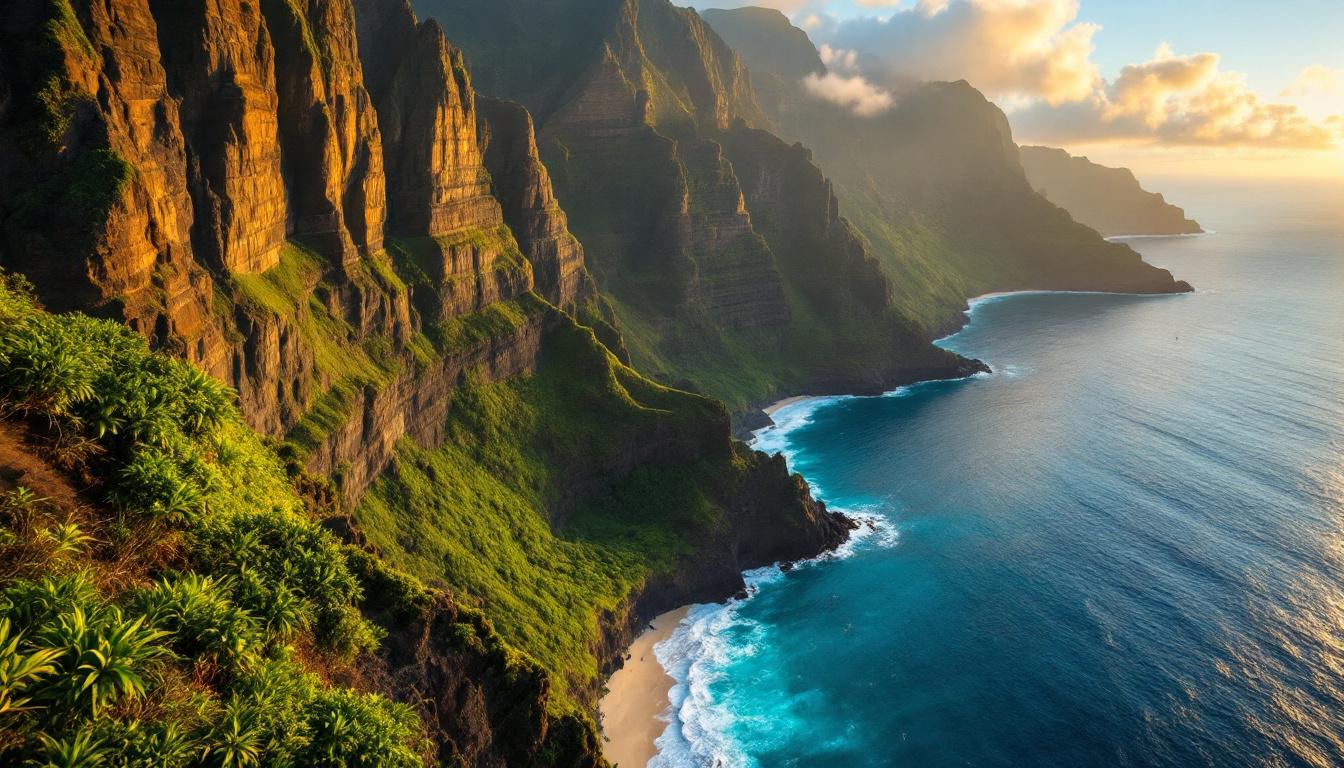Standing at the edge of Kauai’s Na Pali Coast, I watch a park ranger turn away another group of Instagram-armed hikers. “No permits, no entry,” she says firmly, protecting what Native Hawaiians have safeguarded for centuries.
The 60 daily hiking permits aren’t just bureaucracy—they’re a deliberate shield against the social media swarms that have destroyed countless sacred places. Local Hawaiian families who’ve stewarded this coastline for generations fought hard for these restrictions.
What tourists see as inconvenience, Kauai residents call salvation. The permit system has transformed Na Pali from an overcrowded Instagram backdrop into something approaching its original spiritual essence.
Why locals fought for visitor caps on sacred cliffs
Native Hawaiian stewardship meets modern protection
The Kalalau Trail’s 17-mile stretch connects ancient Hawaiian settlements where families lived sustainably for over 1,000 years. When social media discovery threatened to overwhelm these sacred sites, Native Hawaiian cultural practitioners joined forces with state officials to implement the strictest access controls in Hawaii.
Community resistance to Instagram tourism
Local families watched their childhood swimming holes become selfie stations and their ancestral burial sites trampled by unprepared hikers. The $35 camping permits aren’t revenue generation—they’re cultural protection, ensuring only committed visitors experience Na Pali’s true spiritual power rather than treating it as a photo opportunity.
The permit system that actually works
Daily caps creating authentic experiences
With only 900 day-use reservations available across the entire Hāʻena State Park system, Na Pali’s trails feel genuinely wild again. Compare this to Yosemite’s Half Dome, which sees over 300 hikers daily, and you understand why locals fought for these restrictions.
Advanced booking protecting cultural sites
The 30-day advance reservation system eliminates impulse tourism that historically damaged fragile ecosystems and sacred sites. Serious hikers plan accordingly, while casual visitors are naturally filtered toward less sensitive areas—exactly as community leaders intended when designing these protections.
What visitors discover beyond the Instagram crowds
Authentic Hawaiian cultural connection
Without tour buses and selfie crowds, you’ll hear traditional Hawaiian chants echoing off 4,000-foot cliffs and witness local families practicing ancient fishing techniques their ancestors perfected. The permit system restored Na Pali’s role as a living cultural landscape rather than a tourist attraction.
Wildlife recovery in protected spaces
Hawaiian monk seals now regularly birth pups on beaches that were previously overrun with visitors. The endangered Newell’s shearwater has returned to nesting sites along the cliffs, proof that community-led conservation creates measurable results when tourism pressure decreases.
Seasonal access that honors natural rhythms
Dry season optimization for serious hikers
Local rangers recommend May through October for safest trail conditions, when Native Hawaiian families traditionally traveled these coastal routes. Winter permits are limited further due to dangerous surf and muddy conditions that challenge even experienced hikers.
Weather windows locals actually use
Kauai residents avoid the trail during peak tourist seasons, instead choosing weekday mornings when trade winds provide natural air conditioning and afternoon thunderstorms haven’t yet developed. Follow their timing for the most authentic Na Pali experience.
Planning your respectful Na Pali visit
Book permits exactly 30 days in advance through the Hawaii State Parks system—they sell out within minutes of release. Respect the daily caps by having backup plans, understanding that these restrictions preserve what makes Na Pali special.
Consider Seychelles conservation success stories or Montana’s Glacier National Park permit system for similar examples of communities protecting natural treasures. For alternative island adventures, explore Japan’s protected cat islands where visitor limits maintain ecological balance.
Frequently asked questions about Na Pali permits
How far in advance should I book Na Pali permits?
Permits become available exactly 30 days before your visit date and typically sell out within the first hour. Set multiple alarms and have backup dates ready, as this system prioritizes serious hikers over casual tourists.
Can I visit Na Pali Coast without hiking permits?
Day-use visitors can explore Hāʻena State Park beaches with reservations, but accessing the famous Kalalau Trail requires camping permits for distances beyond Hanakāpīʻai Beach—exactly as local communities requested to protect sacred sites.
Why do locals support these visitor restrictions?
Native Hawaiian families witnessed their ancestral lands becoming Instagram backgrounds rather than respected cultural sites. The permit system restored spiritual connection and ecological health that unrestricted tourism had destroyed over previous decades.
